This post contains affiliate links. We may get paid an affiliate commission if you buy something or take an action after clicking one of the links on this web page.
Wait, come back! Yes, I know, you’re surfing a site called “Blade Reviews,” but hear me out for a second. Ask yourself this – How many times do you use your knife each day? Once? Twice? Or are you like me, a guy who genuinely loves pocket knives, but sometimes goes a day or two without the need to cut anything more challenging than tape or paper? But a good pen – Now, there’s something I use every few hours.
Allow me to draw your attention to the TWSBI Eco: A humble, $28 fountain pen fueled by bottled ink and a piston-fill mechanism. It’ll write circles around everything in the aisles of your local office store, while providing better economy to boot. Let’s take a look.
General Dimensions and Details
Am I really going to cover the measurements of a pen? Yes, but only briefly. As you’ll see, TWSBI has already put a great deal of thought into the Eco’s dimensions. Trust me, it’ll pay off later.
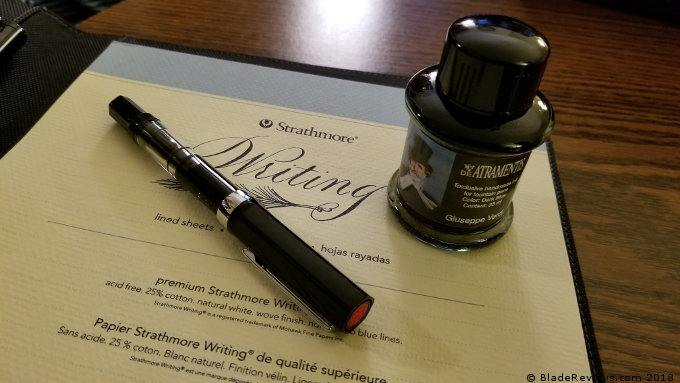
The pen’s barrel is circular and smooth, with 5.2” of clear resin between the tip of the nib and the black hardware out back. It’s what’s known as a “demonstrator,” with its transparent body allowing you to see the vibrantly colored ink sloshing around inside.
The cap features attractively branded silver trim, as well as a red logo set at the apex. The pen’s chassis is 0.5” in diameter, or 0.7” across the cap and clip. TWSBI also offers white, clear, and limited edition colors in a multitude of writing sizes.
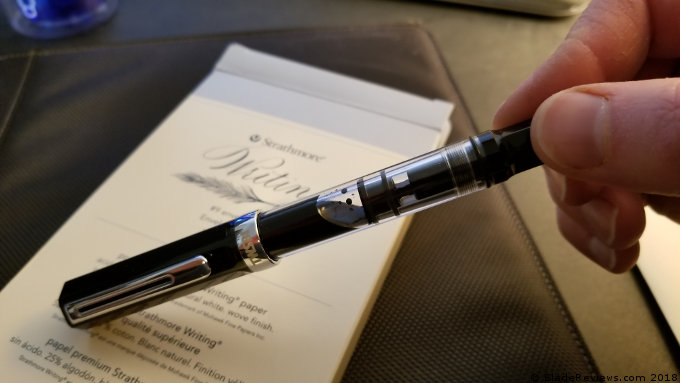
Its 5.5” closed body (including the 2.4” cap) features an ink capacity of 1.76 milliliters. For those not versed in the world of piston fill pens, this is what scientists like Nick Shabazz would refer to as a “non-trivial” amount of space.
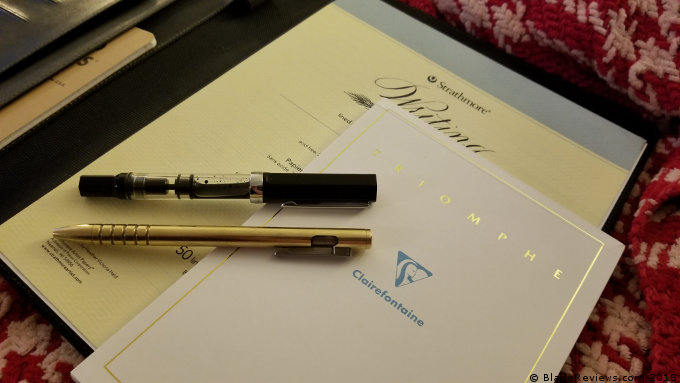
Empty, the pen itself weighs in at 0.7 ounces. This, combined with its tapered 0.4” grip, makes it incredibly easy to wield. My fingers sit just back of the fill hole and 0.7” long steel nib, which represents TWSBI’s “Medium” grind. With the cap slipped onto the back (i.e. “Posted”), the Eco ticks the tape at a pleasing 6.6”. It balances wonderfully in my medium/large hand, allowing me to write for page upon page without the slightest sign of fatigue.
So, through careful consideration of proportion, TWSBI has managed to create a pen that not only fits well in the pocket of your shirt, but also in the palm of your hand. Let’s jump into the ergos before I get ahead of myself.
Ergonomics and Capping
As the dimensions above show, this isn’t exactly a small pen. If you’re used to a Parker Jotter or another u-BIC-uitous design (Sorry), then the Eco can feel positively huge. But, once it’s securely in your hand, you’ll realize that it’s little bigger than a standard Sharpie. The resin of the forward grip tapers gently, allowing for ample purchase even in my slightly finicky hands.
The piston-twist mechanism at the end of the pen is also nicely done, with a hexagonal shape that turns well in the hand. We’ll discuss the pros of this system a bit later, but there is one thing to keep in mind – If the nob turns while it’s in your pocket, the piston will either draw air into the chamber or push ink out. If the cap isn’t firmly screwed in place, this could be a problem.
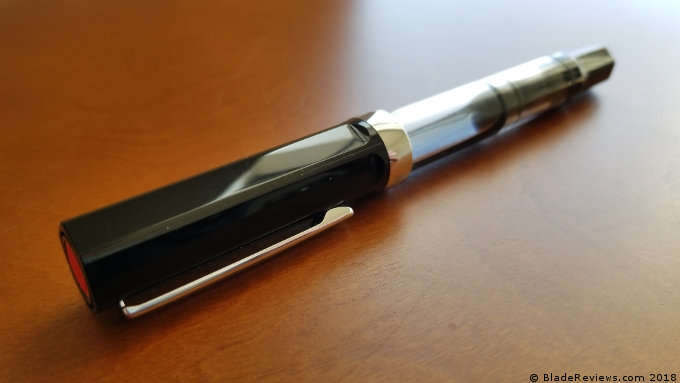
This isn’t a terribly likely scenario, however. When fully retracted (as it is after filling the pen), the nob screws solidly into place. Could it work its way loose? Perhaps, and this concern has led me to carry the pen in a shirt pocket rather than at my side. But it’s not something I’d refer to as a design flaw.
Back to the cap. This attractively badged affair features a threaded closure, with a hexagonal shape matching the aforementioned rear section. It can be posted above the filling mechanism, where its added girth keeps it from turning the piston. This is a nice example of TWSBI’s attention to detail, even on such a budget-minded pen.
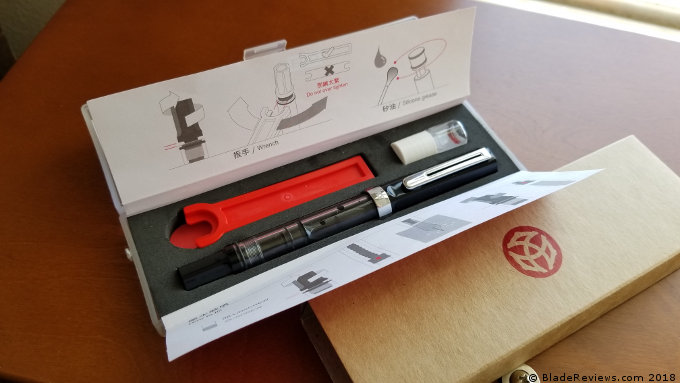
Another interesting note: See that O-ring behind the threads? This should help address dry-out, another common problem with fountain pens. It’s something I’ve encountered on the Lamy Safari, but have yet to see on the Eco.
Writing and Filling
By the economics of fountain pens, this is certainly a budget-minded model. Even TWSBI’s Diamond and VAC lines generally go for twice the price. But despite whatever cost-cutting measures they’ve taken (I consider them to be more stylistic alternatives), the Eco is the most beautiful writer I’ve yet encountered.
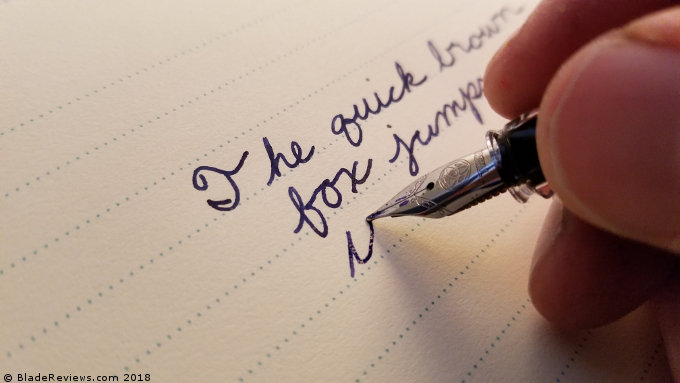
Now, fountain pen aficionados may be rolling their eyes here. But I’m hardly new to the writing game. I’ve previously tested several fountain pens, including the Lamy Safari and the Kaweco Liliput. I’ve also briefly handled and used a Platinum 3776 Century, though this was returned due to a faulty nib. Still, I can assess its $80 quality-in-hand versus the Eco with little difficulty.
Let’s start with the lines. My medium nib lays down a gorgeous, semi-wet trail across the page, with just a hint of variation in width. A little pressure yields extra thickness on the downstroke, allowing for attractive, sweeping loops in lettering. Just take a look here:
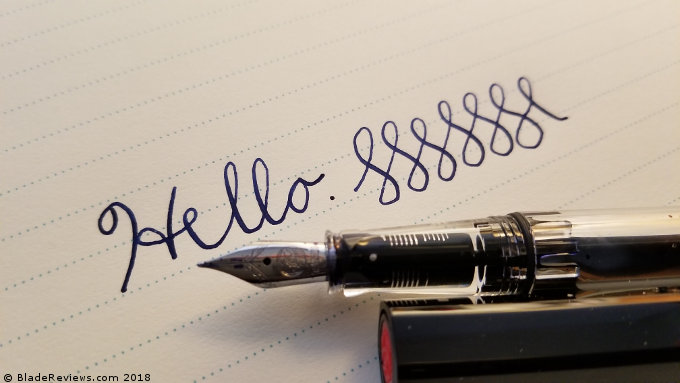
For all my gushing, the Eco is by no means a flex or soft nib pen. Gold and rhodium tips will add additional grace to your penmanship, as will italic grinds and stubs. But that’s a bit further down the rabbit hole than I’m currently willing to go. The Eco represents a wonderful balance of elegance and everyday writing, for half the price of a machined pen from Karas Kustoms or Tactile Turn. I own a Karas Retrakt. It’s a nice pen. But the Eco blows it right out of the water.
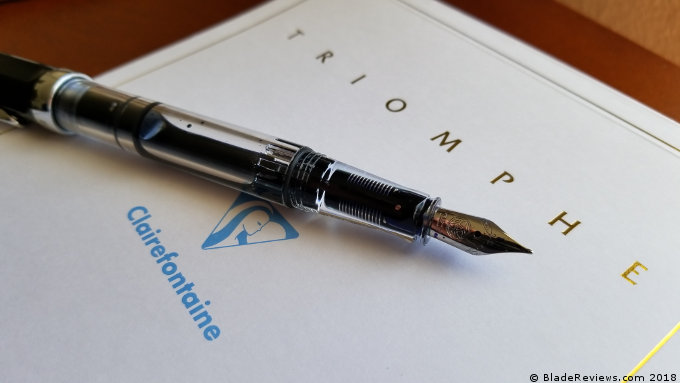
This is due, at least in part, to the wonderful filling mechanism around which TWSBI builds their pens. Using a plastic piston, users can draw a large capacity of ink straight from a bottle of their choice. The downside here is that the Eco won’t be compatible with the myriad of cartridges out there. But, by the same token, you’ll never need to buy a converter to use bottled ink.
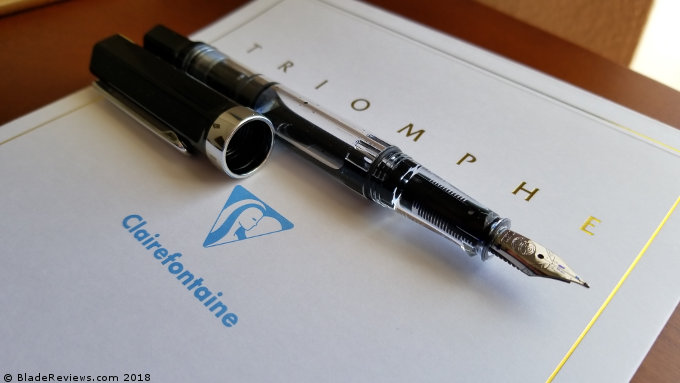
Let’s talk about ink for a bit. The sheer number of choices is intimidating, to say the least. That’s why I turned to the folks at Goulet Pens. They offer ink samples for around $1.50 apiece, each with about enough to halfway fill the TWSBI’s tank. Then, once you’re ready to try another, the Eco is completely disassemblable. This allows for much easier cleaning than a standard fountain pen. It even comes with a special wrench and a vial of silicone grease. I’d recommend caution when completely taking down the piston mechanism, though, as it can be a little tricky. Fortunately, you can unscrew the entire assembly from the back of the pen without breaking it into its component pieces.
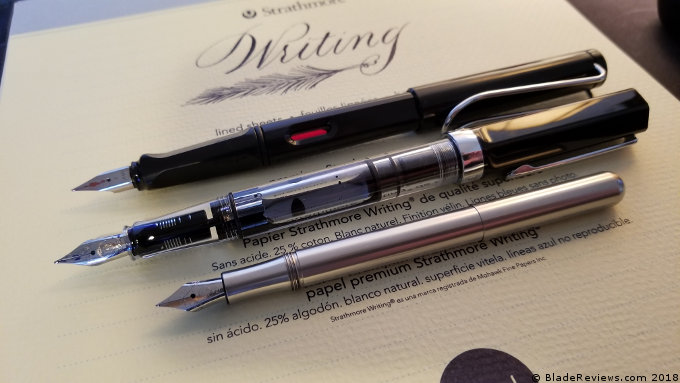
TWSBI ECO Review – Final Thoughts
I’m head over heels for the TWBI Eco. It’s a beautiful little piece of everyday elegance, without the pricey pretentions found in an Aurora or Mont Blanc. Now, I’m sure those are great pens, and I’d certainly like to try them someday. But if the Eco was a revelation at $28, they’d better be capable of performing miracles at $500-plus.
At the same time, the Eco serves as both gateway and gatekeeper. Its intoxicating writing experience has brought me such joy that I’ve already ordered several more fountain pens, all of which cost significantly more. Nothing as extravagant as a Visconti Opera (Lord, that’s pretty), but certainly representative of a step up. But, like I said, the Eco is the benchmark. It sits at the crux of performance, economy, and grace. Right now, I have a hard time imagining something to match it.
- Piston Filler Fountain Pen
- Pen cap is able to post onto the back of the pen
- Comes in EF, F, M, B, or stub1.1 nib size choices.
- Inner cap to insure a perfect seal when pen is capped
- Clear demonstrator
Editor: I recommend purchasing the TWSBI ECO at Amazon. Please consider that buying anything through any of the links on this website helps support BladeReviews.com, and keeps the site going. As always, any and all support is greatly appreciated. Thank you very much.
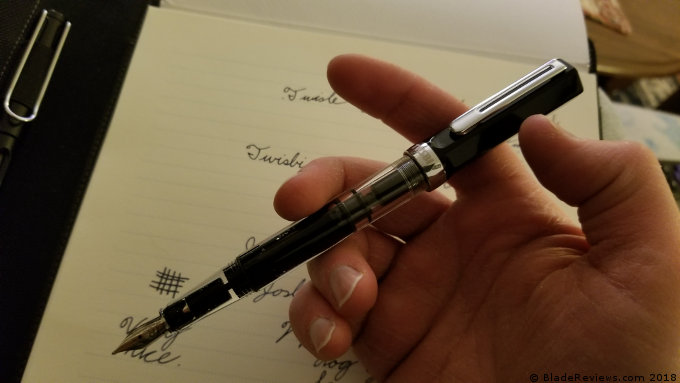
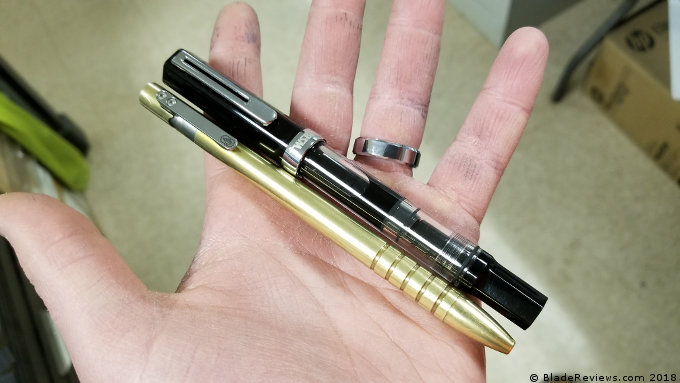
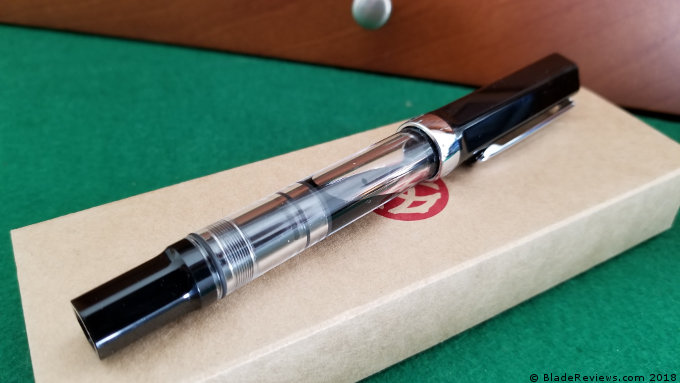
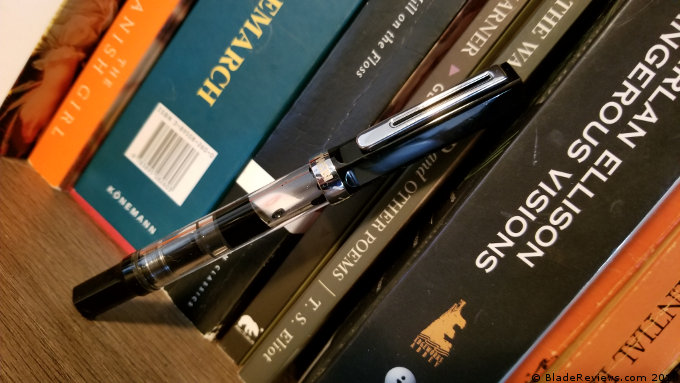

Nice write up. Very fair.
Love my TWSBI.
I, unfortunately, paid more than twice as much as you quote for mine a few years ago at a local shop 🙁
However, as nice as it is, as you note, “Gold and rhodium tips will add additional grace to your penmanship, as will italic grinds and stubs.”
When you are ready to go down the rabbit hole, the Namiki Vanishing Points and Parker Sonnet with an 18k gold nib are even better. Might be worth a look 😉